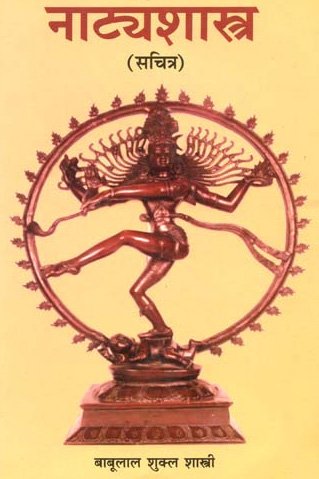Dattila: 3 definitions
Introduction:
Dattila means something in Hinduism, Sanskrit. If you want to know the exact meaning, history, etymology or English translation of this term then check out the descriptions on this page. Add your comment or reference to a book if you want to contribute to this summary article.
In Hinduism
Natyashastra (theatrics and dramaturgy)
Source: Wisdom Library: Nāṭya-śāstraDattila (दत्तिल) or Dhūrtila is the Sanskrit name of one of Bharata’s sons, mentioned in the Nāṭyaśāstra 1.26-33. After Brahmā created the Nāṭyaveda (nāṭyaśāstra), he ordered Bharata to teach the science to his (one hundred) sons. Bharata thus learned the Nāṭyaveda from Brahmā, and then made his sons study and learn its proper application. After their study, Bharata assigned his sons (eg., Dattila) various roles suitable to them.
According to the Nāṭyaśāstra chapter 35.—“Kohala and others together with Vātsya, Śāṇḍilya, and Dhūrtila (Dattila) stayed in this earth for some time as mortals, and put into practice this Śāstra which augments the intellect of men, deals with the deeds of the three worlds and is a specimen of all other Śāstras”.
Note: Dattila seems to be identical with Dantila or Dhūrtila mentioned in the Nāṭyaśāstra (I.26). Abhinava too quotes from one Dattilācārya[3] and it is likely that he is not other than this Dattila. From these quotations it appears that he wrote on histrionics and music. Śāṇḍilya and Vātsya mentioned in the Nāṭyaśāstra (XXXVI.63) along with Dattila (Dhūrtila) are to us nothing but mere names. It is possible that they were writers on some aspects of drama and theatre.

Natyashastra (नाट्यशास्त्र, nāṭyaśāstra) refers to both the ancient Indian tradition (shastra) of performing arts, (natya—theatrics, drama, dance, music), as well as the name of a Sanskrit work dealing with these subjects. It also teaches the rules for composing Dramatic plays (nataka), construction and performance of Theater, and Poetic works (kavya).
Languages of India and abroad
Sanskrit dictionary
Source: Cologne Digital Sanskrit Dictionaries: Aufrecht Catalogus CatalogorumDattila (दत्तिल) as mentioned in Aufrecht’s Catalogus Catalogorum:—on music. Quoted by Kṣīrasvāmin on Amarakośa, in Kuṭṭanīmata 123 (Dantila).
Source: Cologne Digital Sanskrit Dictionaries: Monier-Williams Sanskrit-English DictionaryDattila (दत्तिल):—[from datta] (or dattika, dattiya) m. forms of names terminating in -datta, [Pāṇini 5-3, 83; Kāraṇḍa-vyūha [Scholiast or Commentator]]
Sanskrit, also spelled संस्कृतम् (saṃskṛtam), is an ancient language of India commonly seen as the grandmother of the Indo-European language family (even English!). Closely allied with Prakrit and Pali, Sanskrit is more exhaustive in both grammar and terms and has the most extensive collection of literature in the world, greatly surpassing its sister-languages Greek and Latin.
See also (Relevant definitions)
Starts with: Dattilakohala, Tattilai, Tattilam.
Full-text: Dattika, Dattiya, Dhurtila, Gandharvashastra, Vatsya, Kohala, Shandilya, Shruti, Gandharva.
Relevant text
Search found 6 books and stories containing Dattila; (plurals include: Dattilas). You can also click to the full overview containing English textual excerpts. Below are direct links for the most relevant articles:
Natyashastra (English) (by Bharata-muni)
Part 3 - Literature on Ancient Indian Music < [Introduction, Part 2]
Part 5 - Literature on the Ancient Indian Drama < [Introduction, part 1]
Abhinaya-darpana (English) (by Ananda Coomaraswamy)
The Brahmanda Purana (by G.V. Tagare)
Amarakoshodghatana of Kshirasvamin (study) (by A. Yamuna Devi)
Amarakośodghāṭana (Introduction) < [Chapter 2 - Kṣīrasvāmin: Life and Works]
Gati in Theory and Practice (by Dr. Sujatha Mohan)
Introduction to the Nāṭyaśāstra < [Chapter 1 - Nāṭya]
Technical treatises on Nāṭya (other works) < [Chapter 1 - Nāṭya]
Impact of Vedic Culture on Society (by Kaushik Acharya)
Sanskrit Inscriptions (B): The Maitrakas < [Chapter 3]
3. The Donee Brāhmaṇas < [Chapter 2]